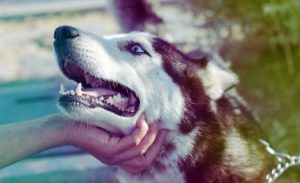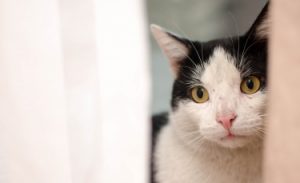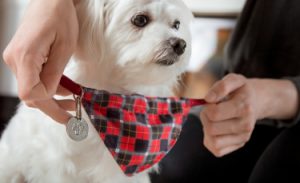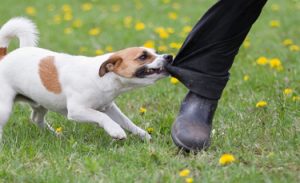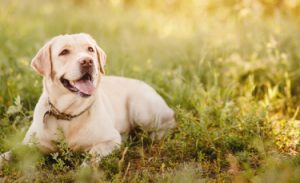Other name: Chart Polski
The Polish Greyhound is a large, powerfully built hunting and racing dog, with well-developed musculature, strong bones, less fine than other short-haired Greyhounds, but without the impression of heaviness. His alert and penetrating gaze is characteristic of the breed, greatly contributing to its general appearance. The gait of the Polish Greyhound is characterized by flowing and energetic movements.
<!–
–>
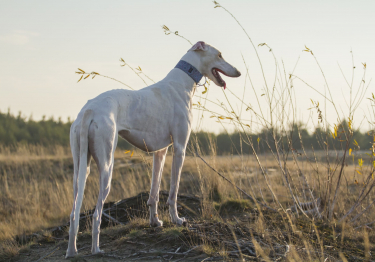
| Short | |
| Polish | |
| Big | |
| Long |
| Sex | Weight | Cut |
|---|---|---|
| Female | From 40 kg to 50 kg | From 68 cm to 75 cm |
| Male | From 40 kg to 50 kg | From 70 cm to 80 cm |
History of the breed
Race of ancient origin, the Polish Greyhound is present in Poland since at least the 13th century. He is said to be descended from Asiatic Saluki-type Greyhounds and would have received contributions from Borzoi and Greyhound. Greyhound breeders Poles have preserved its characteristic long enough and its standards have remained unchanged until the end of the 19th century. The Polish Greyhound breed was provisionally recognized by the FCI (Fédération Cynologique Internationale) on June 13, 1989, then definitively on March 1, 2001. Its official FCI standard in force was published on October 1, 1999.
Polish Greyhound Pictures


View all Polish Greyhound photos from Woopets members
Physical features
His hair: both hard and supple to the touch, short, possibly longer on the withers, behind the buttocks and under the tail.
Its color: all colors and shades are allowed.
His head: powerful and long. The top of the skull is flat, the frontal furrow not very marked, the frontal projections and the supra-orbital arches not very marked, the fronto-nasal depression (stop) very little marked, the nose large and black or dark in color, the muzzle strong and tapering gently towards the nose, without being pointed, the lips sharply drawn and the jaws powerful and articulated in scissors, even in pincers.
Its ears: rather narrow, of medium size, set at the level of the line of the eyes, carried either folded back or in the form of a roof, or even fully erect when the dog is excited.
His eyes: ideally dark in color, from dark brown to amber. Expressive, displaying an alert and penetrating gaze.
His body: sturdy and strong, but not heavy. The neck is long and muscular, the withers small but marked, the upper linen straight at the level of the thorax then slightly arched at the lumbar level, the kidney broad and muscular, the croup sloping gently and long, the chest spacious and well let down, the ribs long and well sprung at the back, the belly raised.
Its tail: long, thick at its attachment, carried low when the dog is at rest, higher when the dog is in action, but never above the kidney.
Behavior and character
| Affectionate | |
|---|---|
| Calm | |
| Protective | |
| Independent | |
| Hunter | |
| Barks / howls |
Behavior with others
| Cohabitation with children | |
|---|---|
| Sociable with other animals | |
| Love strangers |
the Polish Greyhound dog is a sure, confident, courageous and reserved, but not excessively timid. Speed , explosiveness , skill and resistance are the main qualities he brings to bear in hunting (pursuit). His favorite game is mainly made up of hares, foxes, roe deer and bustards, even wolves.
The Polish Greyhound
is it right for you? Take the test!
Education
| Clever | |
|---|---|
| Obedient |
It is important to learn the Polish Greyhound recall From the earliest age. It also calls for quality socialization and learning based on a small dose of firmness and a lot of gentleness and understanding . A very sensitive dog, he cannot tolerate any form of brutality and remains receptive to positive reinforcement methods.
Living conditions
| Suitable for apartment living | |
|---|---|
| Good for new masters | |
| Love it hot | |
| Love the cold |
the Polish Greyhound is not made to live in an apartment . He needs space, freedom and availability from his master, who must offer him enough daily activity.
Health
| Solid | |
|---|---|
| Ease of gaining weight |
the Polish Greyhound is a robust , strong and resistant dog. There is no predisposition to a particular disease, but as with all large dogs, the risk of dysplasia should be watched.
Hypoallergenic breed
No
Litter size
Between 6 and 8 puppies
| Major concerns |
|
||||
| Minor concerns |
|
To protect you from these risks and insure your companion in the event of health problems, Woopets advises you to take out Polish Greyhound dog insurance .

function showAssuranceForm () {var siteReferer = var id_race_association = ‘205’; //console.log(id_race_association);success: function (html) {}});}document.addEventListener (‘DOMContentLoaded’, () => {$ (‘# assuranceModalBanner’). on (‘show.bs.modal’, function (event) {showAssuranceForm ();});});
Life expectancy
Minimum: 12 years old
Maximum: 14 years
The life expectancy of a Polish Greyhound is, on average, between 12 years and 14 years.
Calculate the human age of your Polish Greyhound!
To choose… 1 year 2 years 3 years Four years 5 years 6 years 7 years 8 years 9 years 10 years 11 years old 12 years 13 years 14 years old 15 years old 16 years old 17 years 18 years old 19 years old 20 years 21 years old
Maintenance and hygiene
| Ease of maintenance | |
|---|---|
| Cost of maintenance | |
| Hair loss |
| Drool level | |
|---|---|
| Ease of grooming |
The Polish Greyhound is a dog that sheds very little hair. It is very easy to maintain , but it needs to be taken care of on a regular basis.
It is recommended to brush the dog once a week . It can be bathed occasionally (it can be bathed if it is really dirty) and its nails need to be maintained regularly. His teeth need to be cleaned frequently to eliminate tartar build-up and the proliferation of bacteria.
Price and budget
Purchase price
Mini
€ 600 Maxi
1000 €
The purchase price of a Polish Greyhound is between 600 € and 1000 €.
Annual maintenance cost
Mini
€ 600 Maxi
800 €
The annual maintenance cost of a Polish Greyhound is between € 600 and € 800.
No name is currently proposed. Use our tool to find the name of your Polish Greyhound!
Food
The Polish Greyhound needs a high quality diet suitable for his level of exercise, age and size. Its food is to be divided into 2 meals per day . Strenuous physical activity is not recommended just before and after a meal.
Want the best for your dog?
Create the tailor-made diet for your Polish Greyhound
I discover !
PROMO -30% | Delivered to you!

Physical activity
| Athletic | |
|---|---|
| Energy level | |
| Potential to play |
the Polish Greyhound is a dog that is as calm at home as he is energetic when it comes to exercising outdoors. He needs frequent and long rides to express his speed and endurance.
Competitions
| Classifications & Standards |
|
Others
| Master character <span class="btnTooltip qTip2" title="- Calm: the master must be gentle and know how to show patience. – Active: the owner must be energetic and dynamic to live in harmony with his dog. – Hyperactive: the owner must be stimulating and very restless to suit the temperament of his dog.”> |
Active |
|---|
We talk on the forum
The standard of the Little Italian Greyhound
Guest message
Do you have a question about the Polish Greyhound?
Do not hesitate to ask Woopets visitors for advice on the forum!
FCI Information
FCI No.
333
FCI Group
Group 10: Greyhounds
Recognized by FCI
Since 2001
</div



